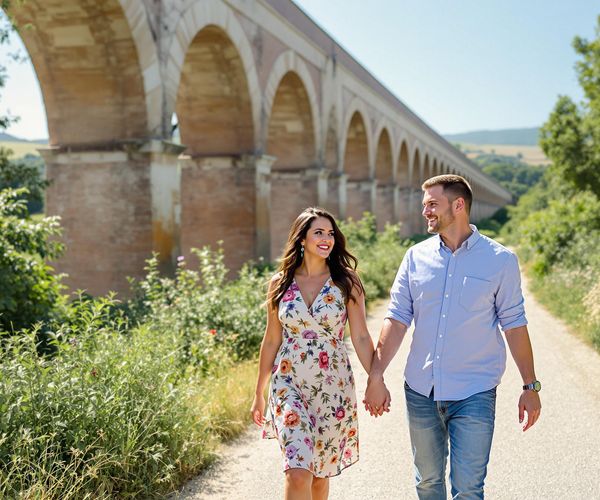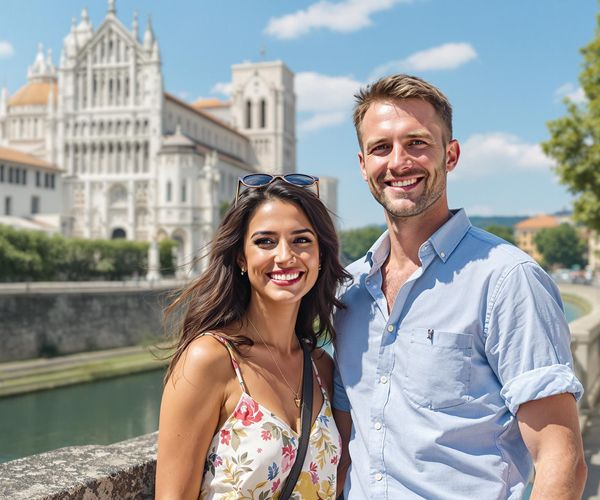e-Scavenger hunt Pisa: Explore the city at your own pace
Highlights
- Explore Pisa at your own pace
- Play a fun and family-friendly game
- Discover interesting facts about the city
- Visit the beautiful Camposanto monument
- Experience the historic Knights' Square
-
Duration 2 to 4 hours
-
Self-guided experience
-
Audio guide in multiple languages
-
Fun family-friendly game
-
Wheelchair accessible
Experience Pisa like never before with the e-Scavenger hunt Pisa. This self-guided tour allows you to explore the city at your own pace while playing a fun and interactive game on your smartphone. Discover the hidden gems of Pisa as you answer questions about the locations and complete search assignments. Use the GPS on your phone to find the most beautiful squares, streets, and monuments while learning interesting facts about the city. No need to worry about schedules or guides, you decide when to start, stop, or pause the tour. This unique city game app is perfect for families, large groups, or anyone looking for a fun and affordable way to explore Pisa. Book now and immerse yourself in the wonders of this historic city.
At a Glance
-
Free cancellation
-
2 hours
-
Instant Confirmation
-
Available in English, Italian, French, German, Spanish; Castilian, Dutch
-
Wheelchair accessible
-
Mobile voucher
-
Private Tour
-
Family friendly
Featured Reviews
Discover Pisa at your own pace with an interactive scavenger hunt experience that combines fun, exploration, and learning about the city's highlights.
Included
-
A great online game and city walk in one to use on your phone
Excluded
-
Use of smartphone and data
Meeting Point
Go to the starting point at Via Santa Maria, 2, 56126 Pisa. Open the App and Go!
Largo Cocco Griffi, 5, 56123 Pisa PI , Italy
End Point
Go to the starting point at Via Santa Maria, 2, 56126 Pisa. Open the App and Go!
Largo Cocco Griffi, 5, 56123 Pisa PI , Italy
What to expect
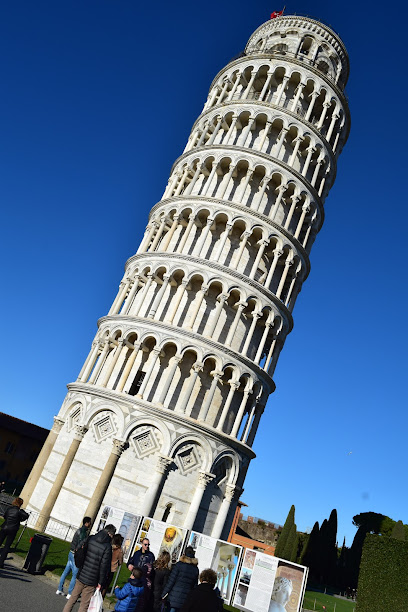
The 'Camposanto Monumentale' is located on the northern corner of the Piazza. It is a walled cemetery, and many consider it the most beautiful cemetery in the world.
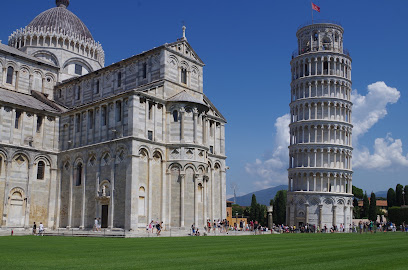
The Baptistery or Battistero is one of the buildings in Piazza dei Miracoli in Pisa. The Baptistery, dedicated to John the Baptist, is opposite the western end of the Duomo.
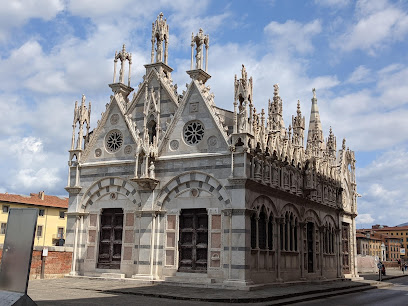
This church was originally an oratory but was later expanded, in 1323, to a pinnacle of the Pisan Gothic. The church also had to serve as a reliquary, in which a 'spina' or thorn from Jesus' crown of thorns was kept.
Piazza delle Vettovaglie
In the historic center of Pisa, this piazza has a very characteristic name that sums up its primary function—Piazza delle Vettovaglie literally means "Supply Square".
Palazzo dell'Orologio
Palazzo dell’Orologio is an ancient medieval building where the Captain of the People (Capitano del Popolo) resided from 1357, when the palace already belonged to the Gualandi family.
Pisa Central Station
The station is one of the main railway hubs in Tuscany.
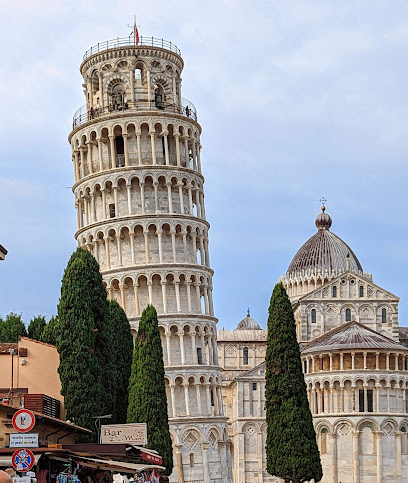
The Piazza dei Miracoli is a large walled area in the center of the Tuscan city. Known as one of the most important centers of medieval art in the world.
Orto e Museo Botanico di Pisa
The Orto botanico di Pisa is the botanical garden associated with the Università di Pisa.
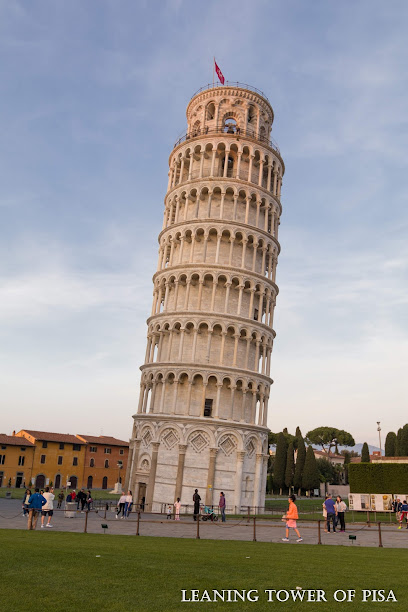
The Porta di Santa Marta was constructed during the Florentine occupation in the mid-15th century to increase traffic flow.
Ospedale Santa Chiara
The traces of the oldest buildings are visible in the two buildings facing Via Roma and in the remains of the corner towers between Via Roma and Piazza del Duomo.
Cappella di Sant’Agata
It was built in the first half of the 12th century by the Vallombrosan monks of the Church of San Paolo a Ripa d'Arno, with which it was connected by medieval buildings.
Mura e Porta del Parlascio
The Parlascio Gate was one of two gates (the other was the Lion's Gate) of the walls of Pisa. These were the main city gates through which the most eminent people of the time had to pass.
Logge di Banchi
The Logge dei Banchi was built between 1603 and 1605 by order of the Grand Duke of Tuscany, Ferdinando I de' Medici. The building served as the seat of the wool and silk markets, the exchange market and later also the maize trade.
Ex Monastero delle Benedettine
The complex, consisting of a church and monastery, built for the Benedictines in 1393 on the south bank of the Arno.
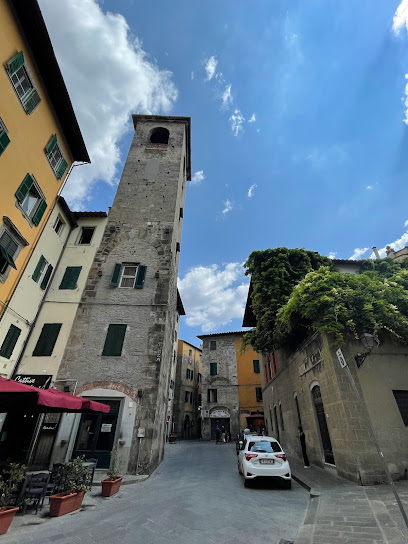
Rectangular in design, five stories high and narrow, it still retains the belfry from which it takes its name. As it marked the hours of the study day for the nearby university
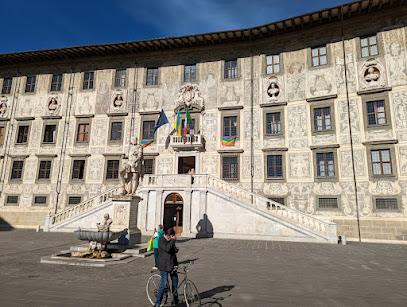
During the Middle Ages, this square was the political center of the Republic of Pisa. In the mid-sixteenth century, the headquarters of the Knights of the Holy and Military Order of Saint Stephen Pope and Martyr was established on this square.
The experience can be subject to change due to bad weather or unforseen circumstances. We always endeavour to give you the best possible experience.
Additional Information
-
All areas and surfaces are wheelchair accessible
-
Infants and small children can ride in a pram or stroller
-
Not recommended for travelers with poor cardiovascular health
-
Public transportation options are available nearby
-
Service animals allowed
-
Suitable for all physical fitness levels
-
Transportation options are wheelchair accessible
-
Wheelchair accessible
What our experts say
-
Try local delicacies at nearby eateries.
-
Visit the Leaning Tower after the game.
-
Use public transport to explore further.
-
Bring extra battery for your smartphone.
-
Check the weather before heading out.
More About this Experience
Introduction
Discover the enchanting city of Pisa in a whole new way with the e-Scavenger hunt Pisa. This unique and affordable self-guided tour allows you to explore the city at your own pace, while enjoying a fun and interactive game on your smartphone. Leave boring guidebooks behind and embark on an adventure filled with fascinating facts and exciting challenges as you unlock the secrets of Pisa.What to expect?
During the e-Scavenger hunt Pisa, you can expect a total duration of 120 to 240 minutes of exploration and fun. Start the tour at Via Santa Maria and let the game guide you through the city's most iconic landmarks, including the stunning Camposanto Monumentale and the majestic Battistero di San Giovanni. Along the way, you'll also pass by the charming Chiesa di Santa Maria della Spina, Piazza delle Vettovaglie, and many other hidden gems. Immerse yourself in the rich history and culture of Pisa as you solve riddles, answer questions, and complete search assignments.Who is this for?
The e-Scavenger hunt Pisa is perfect for anyone who wants to experience Pisa in a fun and interactive way. Whether you're a solo traveler, a couple, or a family, this self-guided tour is designed to be enjoyed by all. It's also an ideal activity for large groups, offering an exciting way to explore the city together and compete for the highest scores. Whether you're a history buff, a puzzle lover, or simply looking for a unique adventure, this tour will keep you entertained and engaged from start to finish.Why book this?
Book the e-Scavenger hunt Pisa and embark on a one-of-a-kind journey through the city's hidden treasures. This tour offers a flexible and personalized experience, allowing you to decide when to start, stop, or pause the game. With the help of GPS, you'll easily navigate the streets of Pisa and discover its most beautiful squares, streets, and monuments. The unique city game app provides you with fascinating facts and stories about each location, bringing the city's history to life. Whether you're a first-time visitor or a seasoned traveler, this tour is guaranteed to surprise and delight you with its immersive gameplay and captivating content.Good to know
Before starting the e-Scavenger hunt Pisa, make sure to download and log in to the free city game app. Detailed instructions will be provided after booking the tour. The tour can be done anytime you choose, giving you the flexibility to explore Pisa at your own convenience. Prepare for a walking adventure, and don't forget to bring your fully charged smartphone. The tour is designed to be family-friendly and suitable for all ages. Immerse yourself in the charm of Pisa's historic center and uncover the city's secrets like a true local.Reviews
Past participants of the e-Scavenger hunt Pisa have praised the tour for its engaging and informative gameplay. They loved how the tour took them off the beaten path and allowed them to discover hidden gems they wouldn't have found on their own. Participants were impressed by the quality and accuracy of the content provided by the city game app, which enhanced their overall experience. Many reviewers mentioned that the tour was a great activity to enjoy with friends and family, as it sparked friendly competition and lively discussions. Overall, participants were thrilled with the e-Scavenger hunt Pisa and highly recommended it as a unique way to explore the captivating city of Pisa.Journals from our explorers at this location
This is a popular product and the date you are looking for just sold out. Next available date is





















